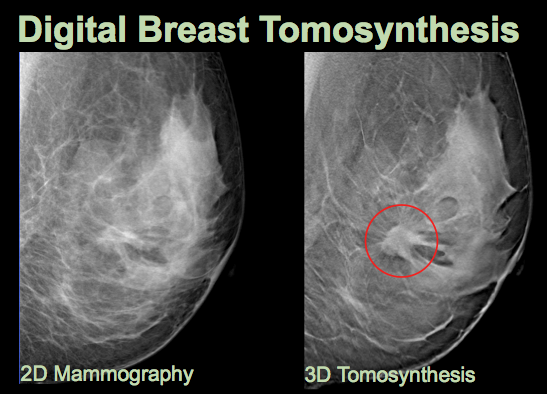Is Your Mammogram Worth the Price?
 When two people mention the same thing to me within a week, I know it’s time to take notice. This time it was 3-D mammograms (aka digital breast tomosynthesis). Hospital radiology departments and mammogram centers are marketing them as if they were the new female Viagra and yet. . . we don’t yet know if the risks are worth the benefits.
When two people mention the same thing to me within a week, I know it’s time to take notice. This time it was 3-D mammograms (aka digital breast tomosynthesis). Hospital radiology departments and mammogram centers are marketing them as if they were the new female Viagra and yet. . . we don’t yet know if the risks are worth the benefits.
A traditional mammogram consists of vertical and horizontal images. The 3-D mammogram, as its name implies, provides a more holistic view as it swings in an arc around the breast, then combines those pictures into a three-dimensional image just like a CT scan. Studies find that combining the two may reduce call backs for additional tests and improve cancer detection rates. Overall, the National Cancer Institute reports, about 20 percent of breast cancers are missed during mammography and about 10 percent of women get called back for further screening.
I first heard about 3-D mammography during a dinner party, when a friend announced that she’d been diagnosed with early-stage breast cancer (actually, she’d been diagnosed with ductal carcinoma in situ [DCIS], which is not technically cancer). If it weren’t for this amazing … Continue Reading
 Ok, so it’s not the most uplifting title of a post, but it’s one that’s been on my mind the past few weeks as I researched and interviewed people for a story on end-of-life issues. I’ll post a link to the story when it appears in Consumer Reports later this summer, but I’d just like to riff a bit about the way we view dying in this country.
Ok, so it’s not the most uplifting title of a post, but it’s one that’s been on my mind the past few weeks as I researched and interviewed people for a story on end-of-life issues. I’ll post a link to the story when it appears in Consumer Reports later this summer, but I’d just like to riff a bit about the way we view dying in this country.